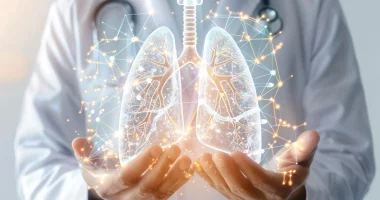ALS, short for amyotrophic lateral sclerosis, is a set of diseases that get worse over time and mess with the nerve cells in your spine and brain. These cells are in charge of moving your muscles. People who affected with ALS slowly lose the power to use their muscles.
Even though ALS is often talked about as one disease, it’s actually a bunch of related diseases grouped together.
ALS is the most usual kind of motor neuron disease when you look at all of them together. Some people call it Lou Gehrig’s disease, named after a well-known baseball player who had it.
Doctors aren’t exactly sure what causes ALS, but they think things like genes you inherit from your family and stuff in your environment might play a part. Right now, there’s no cure, but there are treatments that can help make the symptoms less severe and improve how good your life feels.
Symptoms
Signs and symptoms of ALS typically start with progressive muscle weakness, although this may not be immediately noticeable. In the early stages, symptoms can be subtle, becoming more pronounced as time goes on, yet the rate of progression can vary to different persons.
Common indicators include difficulty with everyday tasks like walking, heightened clumsiness, and weakness in various parts of the body such as the hands, feet, legs, and ankles. Additionally, individuals may experience muscle cramping and twitching, particularly in the shoulders, arms, or tongue, along with challenges in maintaining good posture and holding up the head. Uncontrolled outbursts of crying or laughing, known as “emotional lability,” may also occur, alongside changes in thinking, memory, and slurred speech. Pain, fatigue, and issues with saliva and mucus can also be present.
Early symptoms may manifest as clumsiness, uncommon limb tiredness, muscle cramps and slurred speech, and twitches, gradually progressing throughout the body. Some individuals may encounter difficulties with memory and decision-making, in the end, causes formation of dementia known as frontotemporal dementia. Emotional imbalance can contribute to mood swings and unpredictable emotional responses.
Risk factors
ALS isn’t super common, but it affects a good number of people in the United States. The Centers for Disease Control and Prevention (CDC) says that over 16,000 people in the US have ALS and about 5,000 get diagnosed every year. Around the world, it might affect between 2 to 5 people out of every 100,000.
Some things might make it more likely for someone to get ALS:
- Gender: ALS is a bit more common in males than females, especially before they turn 65. But after 70, there’s no big difference between men and women getting it.
- Age: Most people start showing ALS symptoms when they’re in their late 50s or early 60s, but it can happen at any age.
- Race: People who are Caucasian and not Hispanic seem to have a higher chance of getting ALS. But really, it could happen to anyone.
There are two main types of ALS:
- Sporadic: This means it happens randomly. About 90-95% of people with ALS have this type. Doctors aren’t sure why it happens.
- Familial: This type runs in families. It’s less common, about 5-10% of cases. If a parent has familial ALS, their child has a 50% chance of getting it too. Sometimes, very rarely, it can even affect teenagers.
Life Expectancy with ALS
ALS is a tough disease because it gradually affects all the muscles you can control, making it harder to move. As it gets worse, it can even mess with the nerves that help you breathe, which can be serious.
Doctors have found that about half of the people diagnosed with ALS live for three years or more. And out of those, around 20% live for five years or more. Some people are really strong fighters and manage to live for 10 years or more, about 10% of them. There are even some remarkable individuals who live for 20 years or longer after getting the diagnosis, though they’re rare.
One famous person who lived with ALS was Stephen Hawking. He was a brilliant physicist who got diagnosed when he was just 21 years old. Despite his ALS, he lived until he was 76 years old, showing just how strong some people can be in the face of this disease.
Causes of ALS
ALS is a tricky condition because while some people inherit it from their family, most of the time, doctors aren’t sure what exactly causes it. They’ve been looking into two main areas: genes (which you inherit from your parents) and things in the environment around you.
Genes
In some families, about 20-40% of ALS cases come from differences in a gene called C9ORF72. This gene helps make a special protein found in nerve cells in your brain and spine. Another gene, called SOD1, is behind about 12-20% of ALS cases in families. This gene is important for keeping motor neurons and other cells working right.
There’s also a rare kind of ALS that affects kids as young as 4 years old because of a problem with a gene called SPTLC1. If someone in your family has ALS, it might be a good idea to consider getting tested for these genes too.
Other Possible Causes
Besides genes, there are some other things that might play a part in causing ALS:
- Immune System Problems: Sometimes, your body’s defense system might go a bit haywire and start attacking your own cells, including nerve cells.
- Chemical Imbalance: People with ALS often have too much of a chemical called glutamate near their motor neurons. Too much glutamate can be bad for these nerve cells.
- Protein Mishaps: If nerve cells don’t handle proteins right, the weird proteins they make can build up and end up killing the cells.
Possible Environmental Factors
Some studies have found that people who served in the military and were sent to the Gulf region during a war in 1991 were more likely to get ALS. And there might be links between ALS and things like:
- Getting hurt by machines or electricity
- Serving in the military
- Doing lots of intense exercise
- Being around a lot of farm chemicals
- Being exposed to high amounts of certain metals
But even though researchers have found these links, there’s still not enough proof to say for sure that changing your lifestyle can lower your chances of getting ALS.
Diagnosing ALS
ALS is tricky to diagnose because there isn’t just one test that can tell if someone has it. Doctors have to look at all the symptoms and do different tests to make sure it’s not something else that looks similar.
Tests to Help Diagnose ALS
Doctors might do tests like:
- Electromyography (EMG): This test looks for electrical activity in your muscles. It can help see if your muscles are working like they should.
- Nerve Conduction Study: This test checks how well your nerves are sending messages to your muscles.
These tests can assist rule out other muscle problems like myopathy or peripheral neuropathy.
Sometimes, doctors might also do an MRI scan to see if there’s anything else going on, like a tumor in the spinal cord or a problem with the disks in your neck.
Urine and Blood tests, along with a muscle biopsy (taking a small piece of muscle for testing), can also help doctors figure out if it’s ALS or something else.
There are other health issues that can cause symptoms similar to ALS, like Lyme disease, HIV, polio, multiple sclerosis, or West Nile virus. That’s why it’s important for doctors to do lots of tests to be sure.
Treating and Managing ALS
ALS doesn’t have a cure, so doctors focus on helping with the symptoms, stopping any problems that might come up, and slowing down how fast the disease gets worse.
ALS may cause lots of changes in your body, your mind, and how you interact with others. Because of this, getting treatment usually means working with a team of different doctors who specialize in different areas.
One medication that’s been approved by the Food and Drug Administration (FDA) to help with ALS is called riluzole, also known as Rilutek. It was approved back in 1995 and seems to help slow down how fast the disease gets worse. It might do this by lowering the levels of a chemical called glutamate in your body, which can harm your nerve cells.
Another medication called radicava, or Edaravone, got FDA approval in 2017. It might help slow down the decline in how well you can move by about one-third.
Researchers are also working on finding new ways to use different medicines to treat different parts of ALS.
Besides medicines, doctors can also suggest other treatments to help with specific symptoms you might have.
Summary
ALS is a challenging condition with no cure, but treatments aim to manage symptoms and improve quality of life. Diagnosing ALS involves various tests to rule out other conditions that mimic its symptoms. While genetic factors play a role in some cases, the exact cause of ALS remains unclear.
Despite its progressive nature, individuals like Stephen Hawking have demonstrated remarkable resilience against ALS. Ongoing research offers hope for future advancements in treatment and understanding of this complex disease. Ultimately, a multidisciplinary approach involving specialists is essential for effectively managing ALS and supporting those affected by it.
External Links








